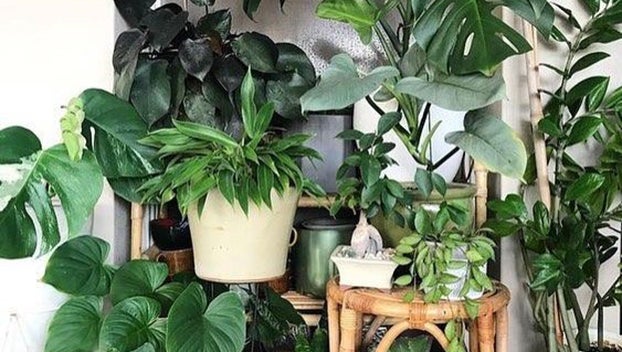MASTER GARDENER — Time to relocate. Use these tips for YOUR houseplant transition
Published 12:02 am Thursday, October 20, 2022

- Group plants are seen in a sunny location inside a home, a protected porch or garage. (Image courtesy of Pintrest.com)
|
Getting your Trinity Audio player ready...
|
Another week of fantastic weather has ended, and fortunately many of us, welcomed much needed rainfall, though the amount hardly reduces our rainfall deficit.
Our first true cold snap of the season has also arrived, with evening temperatures dropping into to the low 40’s and upper 30’s in some areas. So, if you have not yet started, now is the time to determine what to do with your numerous ornamental plants placed outside on porches, patios, decks or scattered about the yard for the spring and summer months.
Now is the time to prepare ahead of the first freezing cold blast, which will save time and minimize frustration, rather than procrastinating until the last possible moment (I’m speaking from experience).
Before attempting to relocate plants to a previous or new location for fall and winter, make space available inside your home, garage, front/back porch (only if plants can be easily protected from freezing temperatures) or greenhouse and have ample sunlight available.
Take the most important first step: Thoroughly inspect each plant for pests.
Search each leaf (top and underside), stem, trunk and soil surface for insects, frogs, lizards, birds or anything else you don’t want inside your home or wherever you plan to over-winter your plants.
While the plants are outdoors, use a garden hose to wash the plants with a gentle blast of water that will remove most pests and insects. If aphids, mites or other pests remain, spray with Neem Oil, which will rid plants of remaining pests.
Once the pests are removed, thoroughly inspect each plant again, removing diseased or dead limbs and leaves. Pruning may also be necessary, especially if the plant has grown substantially during our warm summer months.
If repotting is necessary, prune the roots while the plant is out of its old pot, which will stimulate new root development. The new pot should be upsized no more than 2-inches larger than the previous pot if the roots were tightly bound.
It’s always a good idea to acclimatize your plants before subjecting them to life inside our homes. Begin this process when evening temperatures are around 55 degrees F or cooler. Bring them inside and place them back outside during the day. Gradually increase the amount of time over the next couple of weeks until all plants have migrated indoors.
Of course, if you have a large plant collection (I personally have hundreds of plants in my collection and growing), this simply isn’t possible. If you are not able to move plants in and out, then gradually move sun loving plants into shady areas for a week or two, allowing them to acclimate to lower light levels, then relocate them inside.
Choose an area inside your home that has a temperature range between 60-75 degrees F during the day. Plants dislike temperature fluctuations and drafty conditions, such as being placed close to an entryway, as temperatures dramatically shift once the door is opened.
Humidity inside our homes is typically around 40% or lower. Plants require higher humidity levels, so misting your plants several times a day will provide the needed air moisture, or humidity trays should be used, which are trays filled with pebbles and water.
As the water evaporates, the humidity level increases around the plants. Check the water level every few days, refill as necessary or another option is to purchase an inexpensive humidifier.
Houseplants don’t require as much water as when outside. If the soil surface is moist, the plant doesn’t need water. Test the soil with your finger about an inch below the surface, if it’s dry, water. Do Not overwater houseplants, they will die from root rot.
Plants should be placed near a sunny window so they can get as much natural light as possible. They need sunlight to sustain their daily carbohydrate needs (photosynthesis). If natural light is limited, purchase grow lights, which are low cost and highly effective.
Plants placed in a garage require sunlight or grow lights and a heat source. Garages tend to become very cold when temperatures drop. Back porches make wonderful temporary greenhouses.
Simply frame them with 1 x 1”s and enclose them with plastic and add a small space heater for warmth.
Now my fellow gardeners, let’s go out and grow ourselves a greener, more sustainable world, one plant, at a time!
John Green is a Certified Texas Master Gardener. If you have gardening questions or need more information, contact the Orange County Master Gardeners Helpline at 409-882-7010 or visit txmg.org/orange, Orange County Texas Master Gardeners Association on Facebook or email extension@co.orange.tx.us.





